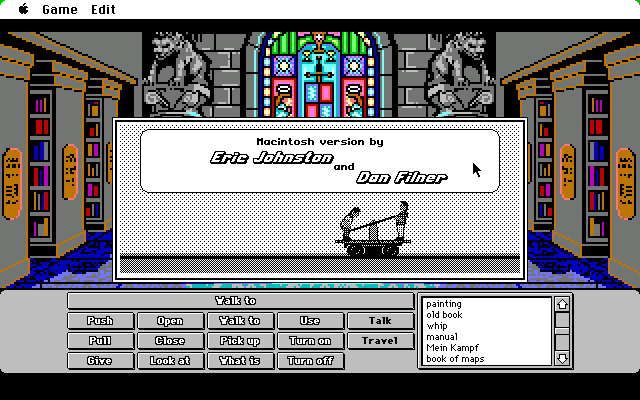(Since there have already been examples involving graphical games, I’ll do that too.)
There are the kind of games like Blue Ice where I suspect the design document could be neatly summed up with “'cause I got high, because I got high, because I got high”. But at least you realize pretty quickly what you’re in for, and you’re either on board with it or you’re not.
What I find really annoying is when a game gives me a problem that I could easily imagine in real life, but doesn’t allow any real life solutions.
In Phantasmagoria 2, you realize that your wallet has somehow gotten under the sofa. (The protagonist blames his pet rat.) In real life, I would find a stick or a shoehorn or something to try and push it. I might try to lift or move the sofa, if it’s not too heavy. But the game expects you to put your pet rat under the sofa, then lure it out from there with a granola bar.
In The Riddle of the Sphinx, you come across an empty camp. You suspect there may be something hidden in a pot of stew. It’s cold, but I guess if you suspect foul play you may still not want to put your hand in it. But surely there is a fork or a spoon or something you could use to fish around for it? But no, the game expects you to light the stove to boil away enough of the stew to reveal the object. Something that I would expect to take hours in real life, but here it happens in an instant.
I rage quit that game shortly afterwards, while in the middle of trying to find the combination for a lock. I had found some numbers on a note, so obviously that had to be it, right? No, those were references to Bible passages that contained numbers. So those had to be the combination, right? No, you need to put those numbers into clues gathered from cassette tapes that you found, and… You know what, game? I really don’t care any more!
But @zarf claimed it had good puzzles when he reviewed it so maybe I just got off to a bad start. ![]()

